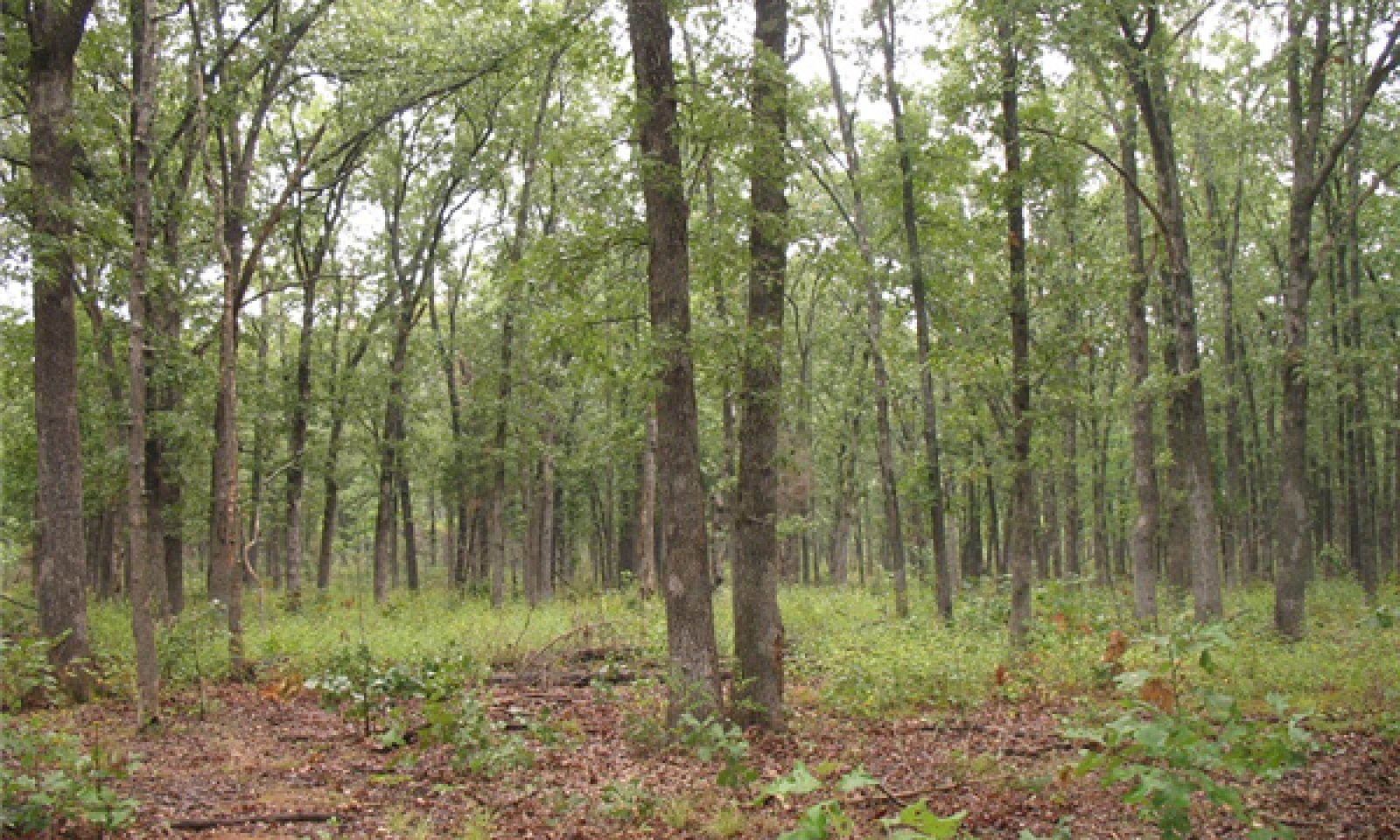
Fragipan Upland Flatwoods
Scenario model
Current ecosystem state
Select a state
Management practices/drivers
Select a transition or restoration pathway
- Transition T1A More details
- Transition T1B More details
- Transition T1C More details
- Restoration pathway R1A More details
- Transition T3A More details
- Transition T3B More details
- Restoration pathway T4B More details
- Transition T4A More details
-
No transition or restoration pathway between the selected states has been described
Target ecosystem state
Select a state
State 1
Reference



Description
The reference state was dominated by post oak and blackjack oak. Periodic disturbances from fire, wind or ice maintained the dominance of oaks by opening the canopy and allowing more light for oak reproduction. Two community phases are recognized in this state, with shifts between phases based on disturbance frequency. Good examples of reference states still exist today. Some sites have been converted to grassland (State 3). Others have been subject to repeated, high-graded timber harvest coupled with uncontrolled domestic livestock grazing (State 4). Fire suppression has also resulted in increased canopy density, which has affected the abundance and diversity of ground flora.
Submodel
Description
These woodlands can resemble the reference state but are denser. The biggest differences are tree age, most being only 50 to 90 years old, and canopy closure. Composition is also likely altered from the reference state depending on tree selection during harvest. These former woodlands are now rather dense, with an under developed understory and ground flora. Thinning and selective harvesting can increase overall tree vigor and improve understory diversity. Continual good forest management will maintain this state.
Submodel
Description
Conversion of woodlands to planted, non-native pasture species such as tall fescue has been common in this MLRA. Soil wetness, AND low organic matter make non-native pastures challenging to maintain in a healthy, productive state on this ecological site. If grazing is uncontrolled and active pasture management is discontinued, the site will transition to phase 3.2.
Submodel
Description
Woodland sites subjected to repeated, high-graded timber harvests and uncontrolled domestic grazing transition to this state. This state exhibits an over-abundance of blackjack oak, hickory and other less desirable tree species, and weedy understory species such as buckbrush, gooseberry, poison ivy and Virginia creeper. The vegetation offers little nutritional value for cattle, and excessive stocking damages tree boles, degrades understory species composition and results in soil compaction and accelerated erosion and runoff.
Exclusion of livestock from sites in this state coupled with good forest management techniques will cause a transition to State 2 (Fire Excluded Managed Woodland).
Submodel
Mechanism
Extended rotations; prescribed fire; forest stand improvement
Mechanism
Tree planting; long-term succession; no grazing; forest stand improvement
Mechanism
Long-term abandonment; uncontrolled grazing; unrestricted logging
Mechanism
Tree planting; long-term succession; no grazing; forest stand improvement
Model keys
Briefcase
Add ecological sites and Major Land Resource Areas to your briefcase by clicking on the briefcase (![]() ) icon wherever it occurs. Drag and drop items to reorder. Cookies are used to store briefcase items between browsing sessions. Because of this, the number of items that can be added to your briefcase is limited, and briefcase items added on one device and browser cannot be accessed from another device or browser. Users who do not wish to place cookies on their devices should not use the briefcase tool. Briefcase cookies serve no other purpose than described here and are deleted whenever browsing history is cleared.
) icon wherever it occurs. Drag and drop items to reorder. Cookies are used to store briefcase items between browsing sessions. Because of this, the number of items that can be added to your briefcase is limited, and briefcase items added on one device and browser cannot be accessed from another device or browser. Users who do not wish to place cookies on their devices should not use the briefcase tool. Briefcase cookies serve no other purpose than described here and are deleted whenever browsing history is cleared.
Ecological sites
Major Land Resource Areas
The Ecosystem Dynamics Interpretive Tool is an information system framework developed by the USDA-ARS Jornada Experimental Range, USDA Natural Resources Conservation Service, and New Mexico State University.
